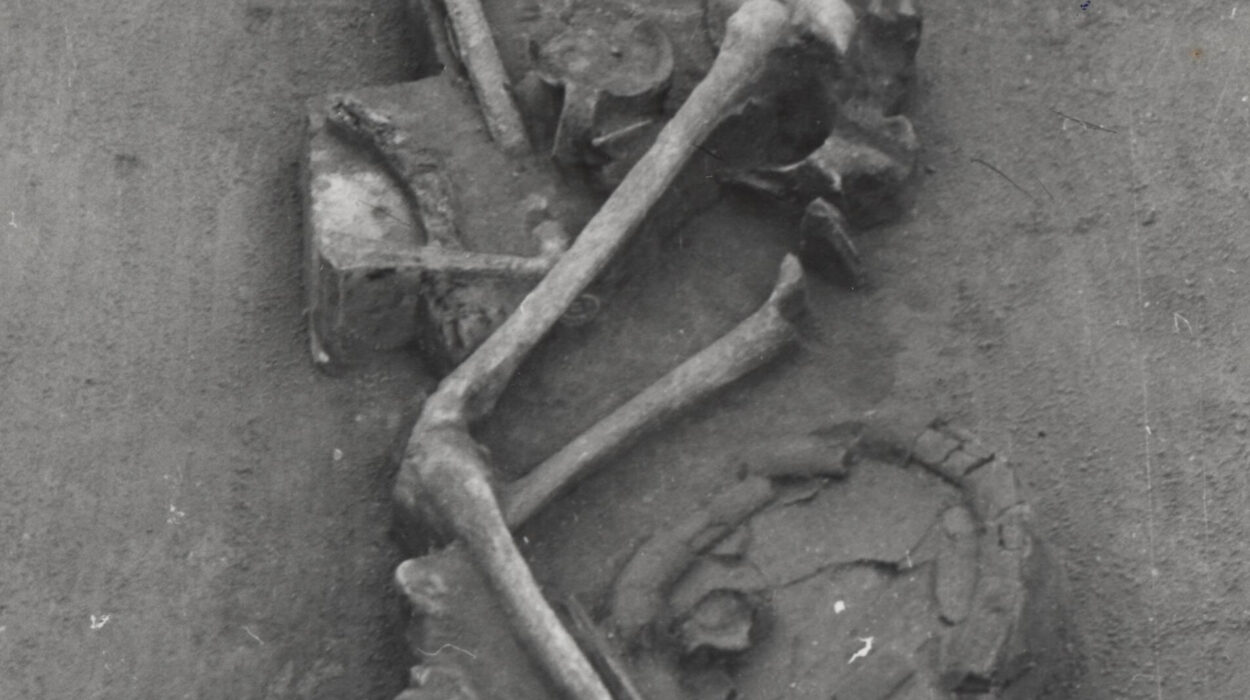In 1983, archaeologists excavating a cave in South Africa discovered an unusual femur bone. It belonged to an unspecified antelope and was found to be 7,000 years old. X-rays revealed that three modified bone arrowheads had been placed into the marrow cavity.
At the conclusion of the 1983 excavation, the bone, together with other artifacts recovered from the cave, was placed in the University of the Witwatersrand’s Archaeology Department storerooms. It lay there until 2022. That’s when new archaeological investigations began at the site where the femur had been discovered: Kruger Cave, in the western Magaliesberg mountains, about 1.5 hours’ drive from Johannesburg. This renewed interest prompted scientists to take a fresh look at Kruger Cave’s treasures.
I am an archaeologist who’s interested in the organic materials preserved at Kruger Cave and in protecting the site for future generations. Along with other scientists from the University of Johannesburg, I suspected that the femur contained more than just sediment and degraded marrow. We had worked together to publish the chemical constituents of a 500-year-old medicine container discovered in the Eastern Cape, South Africa, and decided to conduct a similar investigation into the chemistry of the matrix surrounding the arrowheads inside the femur.
Our research, published in iScience, has revealed that the femur’s contents are arguably the oldest multi-component arrow poison in the world. It’s a complex recipe combining at least two toxic plant ingredients. There’s also evidence of a third toxin.
This is by no means the oldest use of poison for hunting. The application of poison to hunting weapons is thought to have originated about 60,000 to 70,000 years ago, along with the invention of projectile technology in Africa. But evidence for poison at that period is tentative at best and yet to be verified chemically.
Our discovery is the oldest confirmed use of a mixture of two or more plant toxins specifically applied to arrowheads. The ability to mix together complex recipes, whether for poison, adhesive or medicinal purposes, speaks directly to their makers’ cognitive capacities and traditional pharmacological knowledge.
This study also highlights the potential contribution of archaeobotany (the study of ancient plant remains) and organic chemistry to our understanding of the past. It also shows how these two disciplines can work together to tell the story of our past.
Studying the femur
The X-ray images taken in the 1980s were of relatively poor quality. So we decided to re-image the femur using micro-CT. This process essentially uses thousands of X-rays to reconstruct artifacts in three dimensions, at very high resolution. Our results revealed that the sediment-like matrix filling the marrow cavity into which the arrowheads had been placed was not regular archaeological sediment. It was clearly foreign matter.
A small sample of the material was taken and its chemical constituents were analyzed. The chemistry results revealed the presence of two toxic cardiac glycosides (which disrupt the functioning of the heart muscle): digitoxin and strophanthidin. Both are known to have been used historically in some poisons associated with bow hunting.
We also found ricinoleic acid, which can occur as a result of the oxidative breakdown of the toxic lectin ricin. These organic compounds, and others we identified, do not occur in the same plants. This indicates that several plant ingredients must have been combined to create a poisonous recipe.
None of the plant species that contain digitoxin and strophanthadin occur naturally in the vicinity of Kruger Cave. The remains of these plants have also not been detected in archaeobotanical studies of the excavated material. This would suggest that either people were traveling long distances to acquire their ingredients or that there was an established trade in these floral commodities.
Researchers know that long-distance transport of sea shells, as ornaments and later as currency, had been happening throughout Africa long before 7,000 years ago. But the long-distance movement of non-domestic plants at so early a date is something we had not expected. The fact that people knew which plants to acquire, where to find them and how to use them effectively speaks volumes about the antiquity of traditional pharmacological knowledge systems.
In southern Africa, adhesives made with conifer resin, as well as ochre and fat mixtures, date back at least 60,000 years. Documented knowledge of plants’ medicinal properties in the region dates back to around the same period. However, the oldest confirmed medicine that combines more than one ingredient—which, as mentioned earlier, we identified from a discovery in South Africa’s Eastern Cape province—is only 500 years old.
Poison and weapons
The application of poison to weapons signals an evolutionary advancement in the development of hunting technology.
Historical records demonstrate that in most parts of the world, hunters relied on toxic compounds derived from plants and animals to make their weapons more effective. In southern Africa, a great variety of plants and animals are known to have been used by different groups of hunters to tip their arrows. These poisons were often combined in complex recipes using a variety of preparatory procedures.
The earliest molecular evidence for poison in southern Africa comes from a 24,000-year-old wooden spatula at Border Cave in the Lebombo Mountains on the border between Swaziland and South Africa, where traces of ricinoleic acid were found. Ricinoleic acid is one of the by-products (a smaller constituent molecule of a larger organic compound) of the potent toxin ricin, which is found in the castor bean plant. The Border Cave example is, however, probably a single-component poison and not a complex recipe.
What’s assumed to be arrow poison has been found on bone arrowheads at Kuumbi Cave, Zanzibar, from 13,000-year-old deposits. No chemical or other scientific tests were undertaken to verify this interpretation.
Finally, another team recently analyzed poison from a 1,000-year-old arrow from Kruger Cave. Although the oxidative by-products of cardiac glycosides were positively identified, this specimen was significantly more degraded than that from the older femur container. We think the femur container helped to protect the poison from the worst effects of biological degradation.
This article is republished from The Conversation under a Creative Commons license. Read the original article.






